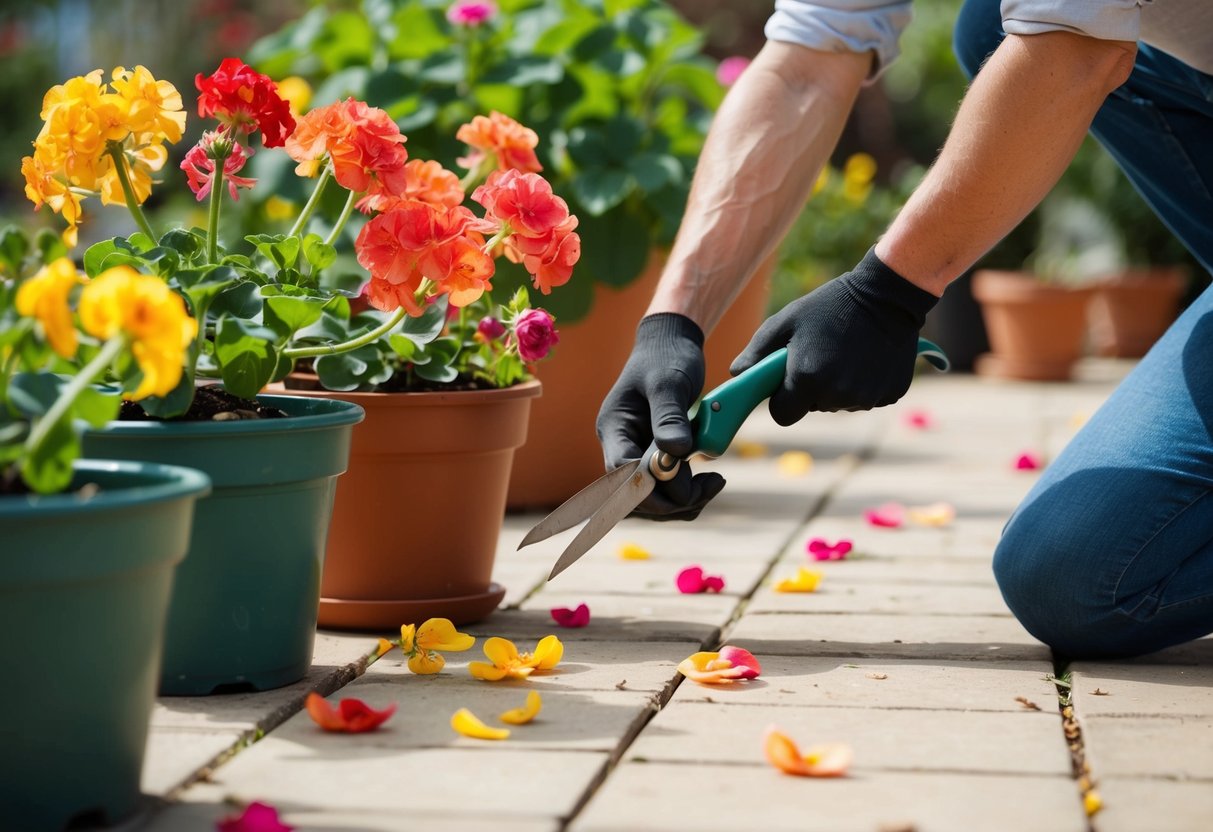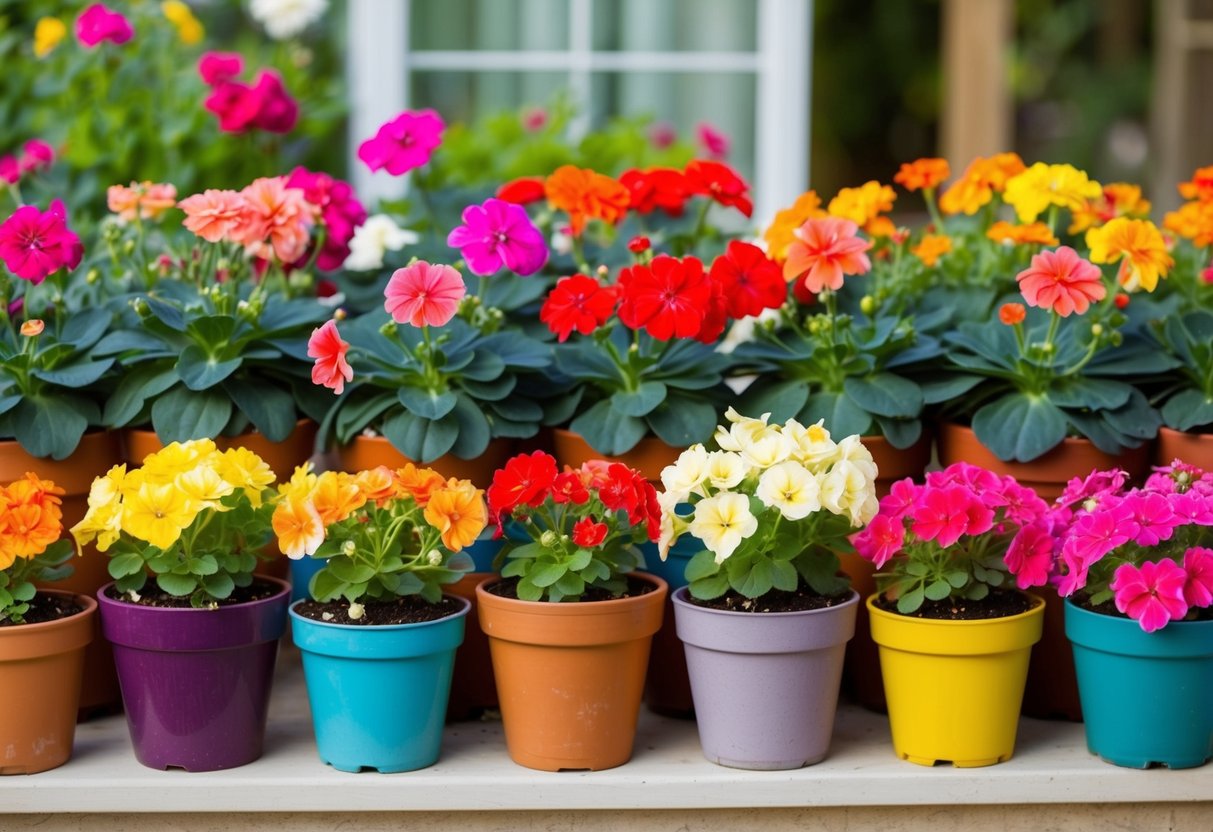What to Do with Geraniums After Flowering: Easy Care Tips
Caring for geraniums after they have finished flowering is key to keeping them healthy and ready for their next bloom. After the blooms fade, cutting the plant back to the base encourages new growth and can lead to another flowering cycle. This means you get to enjoy their vibrant colors more than once a season.

Keeping your geraniums happy involves more than just pruning. Make sure you provide them with plenty of sunlight and maintain moist, well-drained soil. These steps create the perfect environment for your geraniums to thrive and continue producing beautiful flowers.
If you’re looking to boost their growth, consider fertilizing every few weeks with a balanced fertilizer, which can help improve their health and vitality. These simple tips ensure your geraniums stay stunning and lively throughout the growing season.
Understanding Geraniums After Flowering

Once your geraniums have finished their blooming period, it’s essential to take care of them properly to encourage further growth and possibly a second flush of blooms.
Life Cycle and Post-Blooming Phase
Geraniums usually have a vibrant blooming period, after which they enter a resting phase. During this time, you might notice fewer flowers or slight wilting. It’s normal, and part of their natural life cycle. This phase is crucial as it helps the plant store energy for future growth.
You should focus on pruning and removing any dead or diseased parts. By cutting the plant back to the base when the blooms fade, you encourage new growth and help the plant conserve energy. This maintenance helps prepare your geraniums for another potential flush of blooms later in the season.
The Importance of Deadheading for Reblooming
Deadheading is a simple task that greatly benefits your geraniums. By removing spent blooms, you prevent seed formation and encourage the plant to produce more flowers. This easy task helps your plant allocate its resources towards new growth instead of seed production.
To deadhead, gently pinch or cut the faded blooms just above the stem joint. Consistently removing these fading flowers fosters a bushier appearance and can lead to a second flush of vibrant blooms. By regularly maintaining your geraniums this way, you can enjoy a prolonged and colorful blooming season even after the initial flowering has passed.
Practical Geranium Pruning Tips

Pruning your geraniums keeps them healthy and encourages vibrant blooms. Cutting back these plants helps with new growth and prevents them from getting too leggy. You’ll find clear guidance on timing and techniques below.
When and How to Prune Geraniums
Pruning geraniums should start as soon as the blooms fade. Use clean, sharp scissors to cut the stems back to the base of the plant. This helps encourage new growth and possibly a second set of flowers.
Deadheading, or removing spent blooms, should be a regular task. Pinch or cut off the faded flowers to redirect energy to growing more blooms. Early spring is also a great time to prune if your geraniums have been dormant over winter. Remove dead leaves and any unhealthy stems to prepare for the growing season.
Cut back geraniums by about one-third to maintain a bushy shape. Don’t worry if it seems like a lot; this encourages branching. Regular pruning ensures better air circulation too, which can prevent diseases.
Preventing Common Pruning Mistakes
One common mistake is pruning too late in the season. Late pruning can result in stunted growth during the next growing cycle. It’s best to stick to early spring or right after flowering ends.
Using dull scissors or pruners can harm the plant. Always make sure your tools are sharp and clean. This prevents infection and helps make clean cuts.
Avoid cutting back too much at once. While pruning helps, over-pruning can stress the plant. Stick to cutting about one-third of the plant at a time.
Don’t forget to deadhead. By keeping up with deadheading, you ensure your geraniums put their energy into producing new blooms instead of seeds.
Optimal Care for Enhanced Blooms

To keep geraniums blooming beautifully, focus on proper watering, feeding them the right nutrients, and ensuring they are planted in suitable soil. Each of these plays a crucial role in the health and flower production of your plants.
Watering Practices to Promote Health
Watering geraniums properly is essential. You want to avoid both overwatering and underwatering. Check the top inch of the soil. If it feels dry, it’s time to water. Aim for deep watering, allowing the water to reach the roots.
Avoid watering the leaves as it can cause fungal issues. Early morning is the best time to water, so plants have the rest of the day to dry. Remember to adjust watering based on the season and weather conditions.
Essential Nutrients and Fertilizing
Providing the right nutrients helps ensure vibrant blooms. Use a balanced liquid fertilizer every four to six weeks during the growing season. Look for fertilizers with a ratio like 10-10-10 or 20-20-20, which provide nitrogen, phosphorus, and potassium.
Consider adding compost to the soil once or twice a year for added organic nutrients. Watch out for signs of nutrient deficiency, like yellowing leaves, and adjust fertilizing practices as needed.
Importance of Soil Type and Drainage
Geraniums thrive in well-drained soil. If your garden soil tends to hold water, consider adding sand or perlite to improve drainage. This prevents the risk of waterlogged roots.
Use a potting mix that is specifically designed for container plants, as it often includes additives to help with drainage. The right soil type allows roots to access water and nutrients effectively, promoting better growth and more blooms. Maintaining the correct soil conditions is key to avoiding root rot and other soil-related issues.
Repotting and Overwintering Strategies

When taking care of geraniums, know when to repot them and how to overwinter them effectively. Proper timing and techniques ensure that your plants stay healthy and vibrant through different seasons.
When to Repot Your Geraniums
Repotting geraniums is crucial for their growth. Look for signs that your plant needs a new pot, such as roots coming out of the drainage holes or the plant appearing top-heavy. Typically, you’ll want to choose a pot that is one size larger than the current one to give the roots more room.
Use fresh potting soil with good drainage, as geraniums dislike being waterlogged. If you have geraniums in hanging baskets, ensure proper drainage holes and check the soil regularly. You don’t want them sitting in water, which could harm their roots.
Tip: Gently loosen any tangled roots before placing them into the new pot. This helps them settle in and absorb nutrients better. Remember to water the geraniums thoroughly after repotting to reduce stress on the plant.
Overwintering Geraniums for Seasonal Success
Overwintering geraniums can save you from having to buy new plants each spring. Start by cutting back your geraniums by about half to promote healthy growth when they’re replanted. If you have potted geraniums, bring them inside before the first frost.
Alternatively, dig up the plants, shake off excess soil, and store them bare-root in a cool, frost-free location. Keep the temperature between 45-50°F (7-10°C) and ensure they have adequate space around them. If restricted on space, take cuttings from healthy stems and plant them indoors.
In the spring, replant your geraniums outdoors or in larger pots. This technique will let your plants bloom beautifully next season.
Creative Ideas for Your Geranium Displays

Geraniums are versatile plants that can add vibrant color to your garden or home. You can explore exciting ways to use them, from container gardening to designing garden beds.
Using Geraniums in Container Gardens
Growing geraniums in containers is a great option if you have limited space. You can use pots of various sizes and materials like clay, plastic, or even upcycled items like old buckets. This approach provides flexibility since you can move the containers to different locations based on light conditions. Grouping several containers together also creates a colorful focal point on patios or balconies. Pairing geraniums with other plants like petunias or ivy enhances the visual appeal and adds textural contrast to your display.
Designing Garden Beds and Landscapes with Geraniums
In garden beds, geraniums can be the stars or complementary plants in mixed arrangements. To create a cohesive look, consider their color and height when designing your garden beds.
Place taller varieties in the center or back. Use shorter ones along the edges. Geraniums combine well with perennials like lavender or salvia, providing a mix of colors and textures.
When planning your garden landscape, think about companion plants that will enhance the growth and appearance of your geranium beds. This strategy helps ensure a lively and harmonious garden space.







